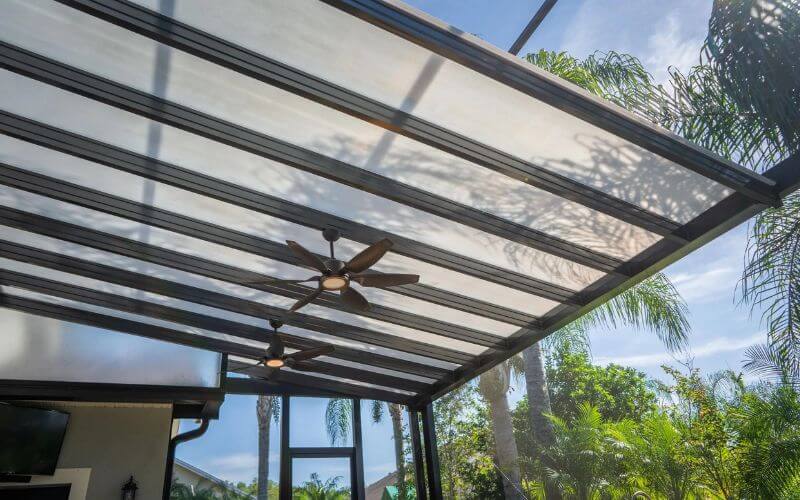Polycarbonate roof panels have been gaining popularity in the roofing industry over the past few years. As we strive to find more sustainable and durable roofing solutions, these panels have emerged as a promising option for residential and commercial buildings. With advancements in technology, the future of roofing is heading toward polycarbonate roof panels. This article will explore the benefits, versatility, and potential impact of polycarbonate roof panels on the roofing industry, shedding light on why they are set to become a game-changer.

A Guide to Installing Polycarbonate Roof Panels
Installing polycarbonate roof panels is a practical and cost-effective way to bring natural light into a space while protecting it from the elements. Whether adding a skylight, a greenhouse roof, or covering a patio, installing polycarbonate roof panels follows a systematic approach.
Plan and measure the area accurately, assessing the structural integrity of the roof or support structure. Gather the necessary tools and materials, including polycarbonate panels, roofing screws with neoprene washers, a saw, screwdriver or drill, measuring tape, safety gear, and sealant or flashing tape.
Cut the polycarbonate panels to size and shape with a saw, leaving a slight overlap (usually about 1 inch) between panels for a secure seal. Begin installing from the bottom, securing each panel to the support structure using roofing screws. Follow the manufacturer’s screw placement guidelines along the panel’s ribs. Apply sealant or flashing tape at the panel overlaps to create a watertight seal around the screw holes for added weatherproofing. Trim any excess material for a neat finish. After securing all panels, conduct a thorough inspection, clean debris or excess sealant, and ensure all fasteners and seals are secure for a long-lasting installation.
Tips for Maintaining Polycarbonate Roof Panels
Maintaining polycarbonate roof panels is crucial to ensure their longevity and retain their aesthetic appeal. Here are a few tips to help you keep your polycarbonate roof panels in top condition.
1. Regular Cleaning: Regularly cleaning your polycarbonate roof panels helps prevent the build-up of dirt, debris, and algae, which can degrade the panels over time. Use a soft brush, mild detergent, and warm water to clean the panels gently. Avoid using abrasive materials or harsh chemicals, which can cause scratches or damage.
2. UV Protection: Polycarbonate roof panels are highly resistant to UV radiation, but prolonged exposure can cause fading, yellowing, and loss of transparency. Applying a UV protective coating to the panels can help maintain their appearance and extend their lifespan. Additionally, ensuring that the panels are installed in a way that minimises direct sunlight exposure can also help mitigate damage from UV rays.
3. Inspect and Repair: Regularly inspect your polycarbonate roof panels for any signs of damage, such as cracks, leaks, or loose fittings. Promptly address any issues to prevent further damage and ensure the panels remain structurally sound. Minor cracks or leaks can often be repaired using polycarbonate-specific sealants, but more extensive damages may require professional assistance.
By following these maintenance tips, you can ensure that your polycarbonate roof panels remain durable, visually appealing, and contribute to the overall longevity of your roofing system.
Also Read: Roof Like a Pro: 6 Must-Know Hacks for a Sturdy Roof Structure
The Environmental Impact of Polycarbonate Roof Panels
Polycarbonate roof panels offer several environmental benefits compared to traditional roofing materials. First and foremost, polycarbonate is a recyclable material, which means that at the end of its lifespan, it can be melted down and used to manufacture new panels or other products. This helps reduce the amount of waste going to landfills and conserves resources. Additionally, polycarbonate is a lightweight material, which reduces the energy required for transportation and installation. This can help decrease fuel consumption and carbon emissions during the transportation process. Furthermore, polycarbonate roof panels are known for their excellent thermal insulation properties. This means that buildings with these panels require less energy for heating and cooling, resulting in reduced energy consumption and lower greenhouse gas emissions.
The versatility of polycarbonate roof panels also contributes to their positive environmental impact. These panels can allow natural daylight to enter a building, reducing the need for artificial lighting during the daytime. This saves energy and improves the well-being and productivity of occupants. Moreover, polycarbonate panels can be coated with protective UV layers, which prolongs their lifespan and reduces the need for frequent replacements. By being durable and long-lasting, these panels help minimise the environmental impact of manufacturing and disposing of roofing materials.
As the roofing industry moves towards more sustainable practices, polycarbonate roof panels are emerging as a promising option. Their recyclability, lightweight nature, thermal insulation properties, daylighting capabilities, and durability make them a game-changer regarding environmental impact. With advancements in technology and growing awareness of the benefits of these panels, their usage is expected to increase significantly in the future, leading to a greener and more sustainable roofing industry.